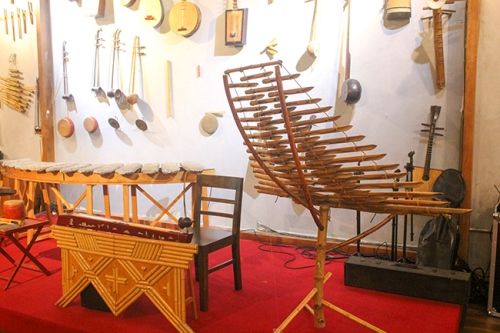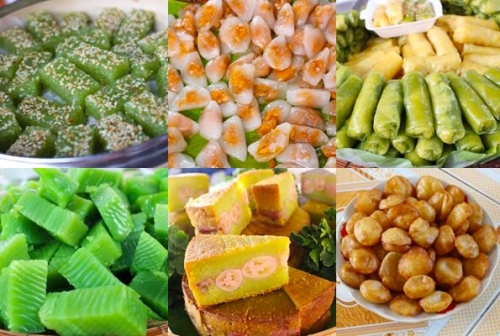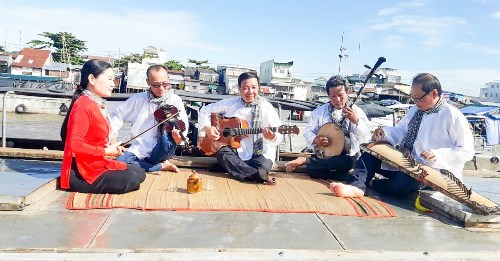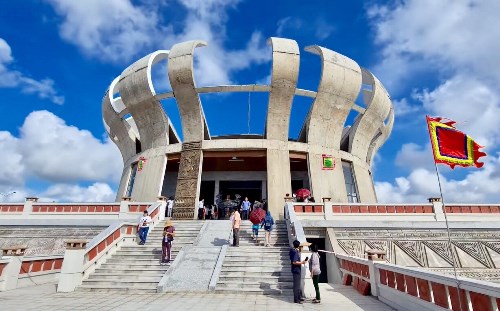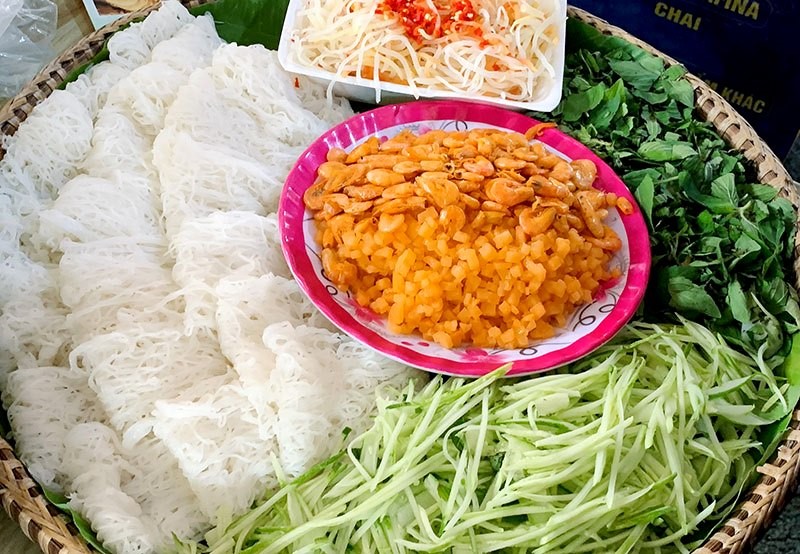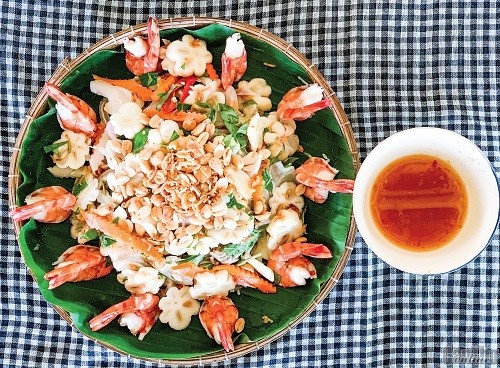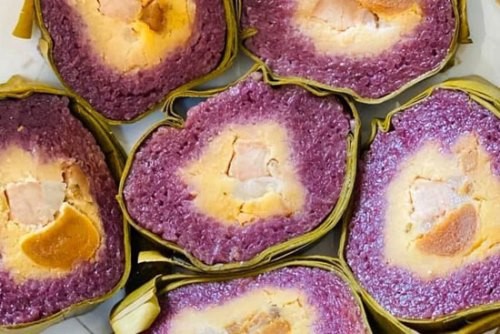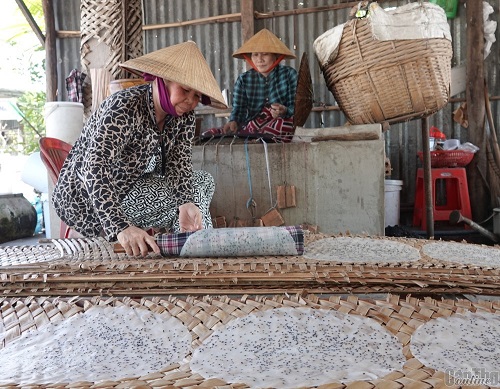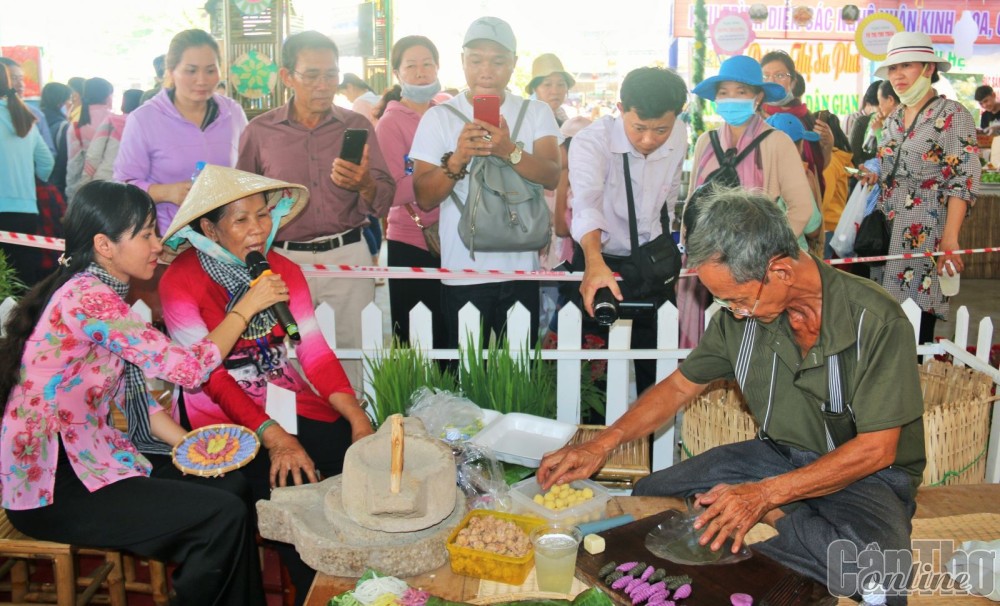
Rapid development and timely orientation
In the past, when coming to Cai Rang district, visitors only knew the floating market and some familiar gardens in Ba Lang ward or Thuong Thanh ward. At that time, Cai Rang tourism was spontaneous, small in scale, uninteresting and disjointed. Over the last 3 years, Cai Rang tourism has changed completely. When Can Tho city Party Committee issued Resolution No. 03-NQ/TU dated August 1st, 2016 on promoting tourism development, Cai Rang District Party Committee also actively issued Resolution 03-NQ/QU dated November 11th, 2016 on tourism development in Cai Rang district in the period from 2016 to 2020 (Resolution No. 03). On this basis, Cai Rang district decided on developing river tourism, associated with the exploitation of ecotourism, discovering handicraft villages and cultural - historical sites. In particular, specifying the tourism space in the wards of Le Binh, Thuong Thanh and Ba Lang is the key to establish quality products and services. At the same time, Cai Rang focuses on operating and developing tours as well as exploiting the river routes from Cai Rang floating market to the canals linking to the local tourist attractions. Consequently, this will give Cai Rang district an opportunity to make a breakthrough in tourism development.
In 2016, there were only 16 tourist destinations in the district. However, so far the number has reached 23 places (up to September 2018), of which the highest increase is homestay and ecological garden. The growth rate accounts for nearly one third in less than three years. The number of visitors coming to Cai Rang is also increasing constantly, with 478,350 visitors in 2016 (an increase of only about 1.3 percent compared to 2015) and more than 612,500 visitors in 2017 (about 28 percent higher than last year). There are many tourist attractions in the three wards of Le Binh, Ba Lang and Thuong Thanh that have become inviting places to tourists over the last few years. For instance, the route linking Cai Rang floating market and Hủ Tiếu Quê Tôi stopover (No. 2, Yen Ha area, Le Binh ward), attracting a large number of tourists, has just been established and developed in 2017. Only a few hundred meters away from the market, near the center of Cai Rang market, the factory of Hủ Tiếu Quê Tôi is not only convenient for transportation but it is also the ideal stop for tourists to enjoy delicious noodles, learn how to make a cake under the guidance of the skillful workers. On average, Hủ Tiếu Quê Tôi welcomes hundreds of guests every day. This stopover is also near Yen Ha hamlet, the handicraft village of Cai Rang district famous for its woven baskets, thus becoming the route known to tourists.
In the Adjusted Master Plan of Can Tho Tourism Development 2020, oriented to 2030, there are a number of key tourist areas, of which Cai Rang is prioritized for developing river-based tourism and leisure travel with top-notch recreational services. Since then, the Cai Rang district has been gradually establishing its specific types of tourism like river-based tourism, eco-tourism and luxury resorts. Azerai Hotel in Can Tho city (Hung Phu, Cai Rang) is one of the most prominent destinations with high class services that have been attracting a large number of tourists since 2017. Susan Noonan, Director of Azerai Can Tho Resort, said: "Con Au islet is a special oasis in the Mekong Delta. There are plenty of green spaces, natural beauties and we remain it unchanged so the resort can have a completely new style with best services. We attract tourists from all over the country to come here to enjoy the beauty of Con Au islet as well as the vibrant city of Can Tho. There are many tourist attractions here such as Cai Rang floating market, the stork gardens, ancient houses, orchards, rice noodle factory ... which is not easy to find elsewhere".
Today, Cai Rang has identified clearly and developed fully several types of river-based tourism, urban eco-tourism, resorts with high-class entertainment services, especially Cai Rang market and homestays as the central products.
Create favorable conditions to promote tourism potential
Cai Rang tourism is developing greatly with several crucial investments. The local authorities are creating favorable conditions and support policies to timely promote the tourism potential and gradually contribute to make tourism become a leading industrial sector of the city in 2020.

Cai Rang floating market is a popular destination for international tourists.
Photo: Ai Lam
On that basis, Cai Rang is making the effort to implement the project "Conservation and Development Cai Rang floating market" (referred to as project). The project will be implemented from 2016-2020 with many construction and non-construction entries. So far, 9 out of 13 entries have been implemented, including: distributed system of buoys, limited floating beacon, anchor signs, social security activities for floating market people, clean agricultural production models, loan policies to improve people’s lives and so on. Mr. Nguyen Anh Dung, Secretary of Yen Binh area, said: “Compared with previous years, the security and safety in the floating market has been better, no more burglary on the river so the traders can peacefully do their job. Besides, the local authorities here also facilitate business loans so that traders and people can be tied to the market longer”. Particularly in Le Binh ward, the authorities has also worked with the district police to support ships, boats to be anchored safely and grant the temporary residence permit to families living on boats in order to give children the opportunities to study at school. Local authorities have also worked with other related units and departments to establish several models of "River patrol", "Safe floating market" and "Collecting trash on the river" to protect the environment and ensure the local security. In addition, Le Binh ward has coordinated with the Vietnam bank for Social Policies of the district to loan 174 traders working at the floating market the business capital with the total amount of 5.64 billion VND. In two years (2017-2018), the total loan for tourism development which Cai Rang gives out to support households is about 12.1 billion VND.
Currently, the project has 4 entries: the stop, pier, yacht, floating restaurant and all of them are still in the implementation phase. Cai Rang District People's Committee also asked for feedbacks concerning the stop and pier. With a total area of more than 4.000m2, the stop will have a restaurant; some stalls selling clean agricultural products and tourist products; a nursery area, a coffee shop, an observatory, public toilets with the total investment of nearly 14.8 billion VND. Mr. Le Thanh Tam, Chairman of Cai Rang District People's Committee, said: “Cai Rang is still trying to implement the project in accordance with the progress, focus on solving environmental pollution, study some solutions for building the embankment without negatively affecting the floating market; continue to research and invest in diversified products and services".
Mr. Bui Huu Sang, Head of Culture and Information Department of Cai Rang District, said: "After two years of implementation of Resolution No. 03, Cai Rang tourism has many changes with diversified and attracting products. Clear local planning and right direction of tourism development has created favorable conditions for people as well as enterprises to work and to invest in tourism". Accordingly, Cai Rang has also planned and implemented a number of tourism projects along the river islets which is aimed at river-based tourism and eco-tourism with resorts such as urban eco-tourism in Con Au islet, a complex made up of villas and a golf course. Currently, there are some tourist sites which are under construction and ready to go into operation like Ba Lang Resort, Green Village (Green Village Co., Ltd), Hakia Garden and so on. Susan Noonan, Director of Azerai Hotel in Can Tho, said: "We acknowledge and appreciate the support from the locals for the hotel to come into operation. The development of the hotel will attract more investment into the area, while improving the lives of local people living and working in this area”.
Cai Rang gradually has a new face. This is a joint effort of the whole community: the people, the enterprises and the government.
|
In 9 months of 2018, Cai Rang welcomed over 564,000 visitors, an increase of 15.5% compared to the same period in 2017, reaching 87.6% of the year’s plan. In particular, international tourists reached to nearly 78,400 as domestic tourists reached to 485,670. The number of visitors traveling to Cai Rang floating market was about 285,900, accounting for nearly 51% of the total number of visitors coming to Cai Rang; Eco-tourist destinations welcomed about 119,000 visitors, comprising roughly 21% of the total number of visitors. There were 34,300 in-house guests staying in the district, including nearly 16,100 international visitors. The number of homestay visitors is 26,300, accounting for 76.7% of the total number of stays. Total revenue from tourism in 9 months reached to nearly 37.6 billion VND, constituting 82.2% of the year’s plan. |
Source: Can Tho Newspaper - Translated by Hoang Dat





